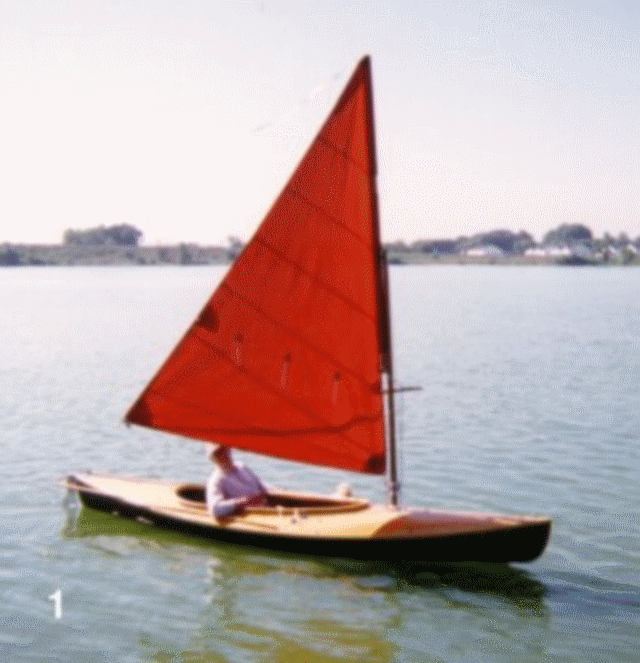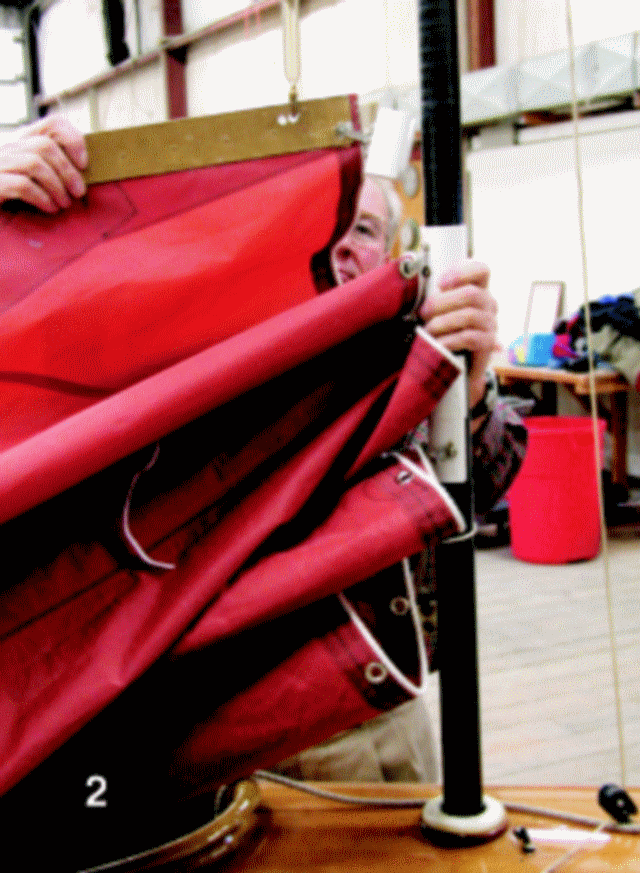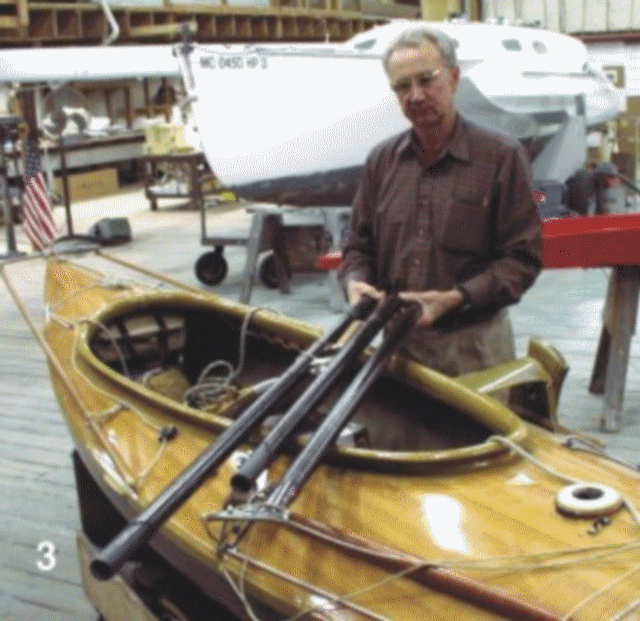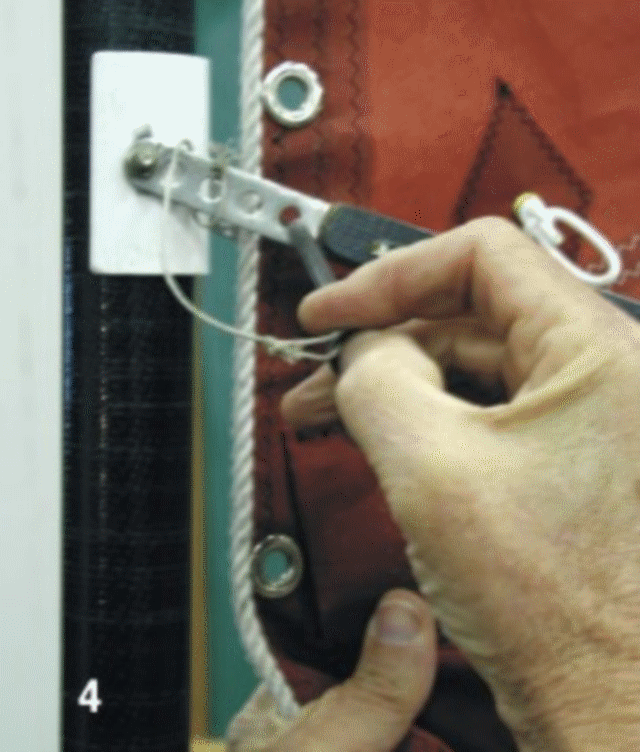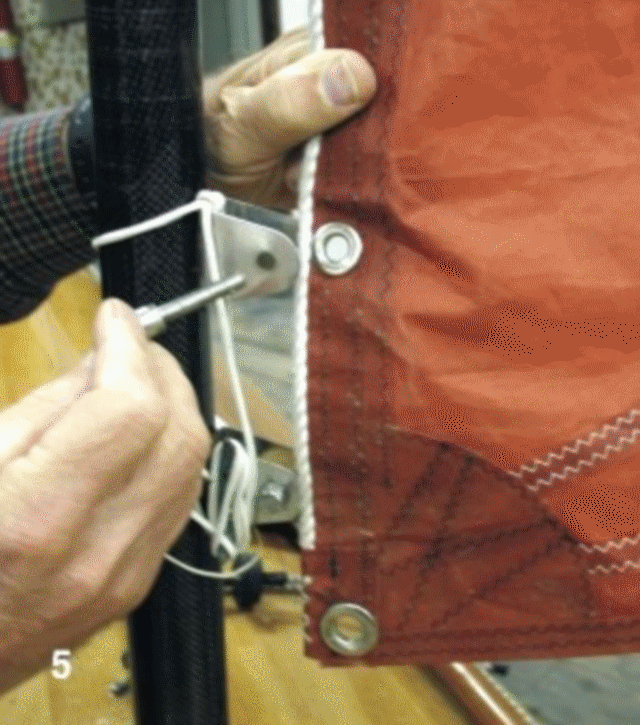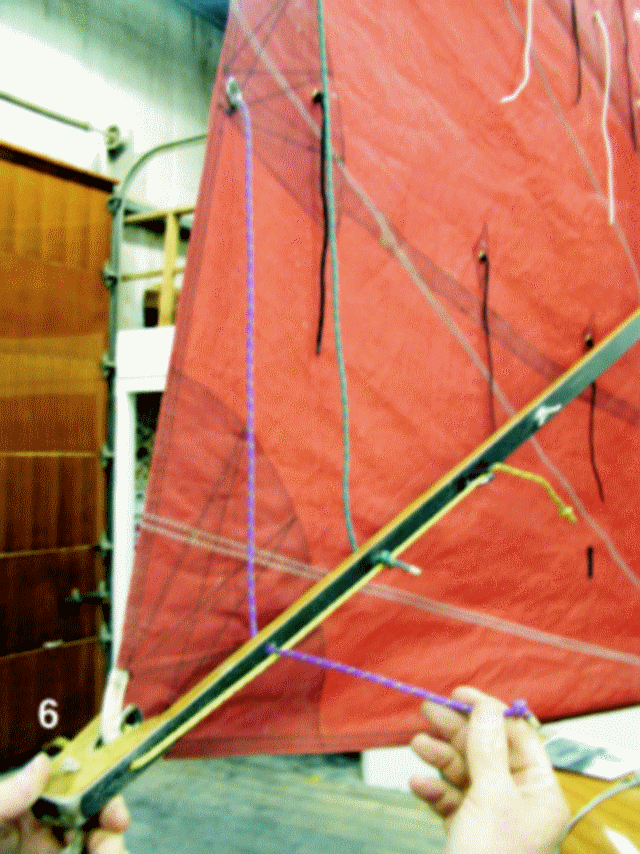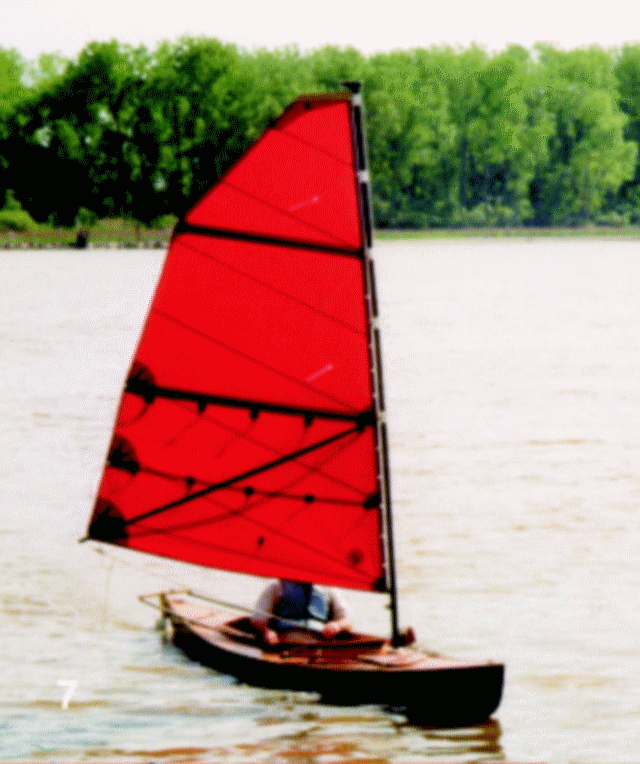
By Meade Gougeon — GBI Founder
The original sailing rigs on both Serendipity and Puffin are Hugh Horton’s sophisticated version of the old, but efficient sliding gunter rig (Figure 1). Hugh had put a lot of thought into sailing rigs for canoes and had chosen the gunter because it best fit several needs that he considered mandatory for a cruising canoe.
First and foremost for safety reasons, any rig for a sailing canoe has to be quickly removable and easily stowed inside the hull while at sea. This means that no part of the rig can be longer than 7′. The rig also has to be very light and reefable because of the limited righting moment available. This is a gentlemen’s boat, where we stay comfortably positioned in the cockpit on a cushy adjustable seat, rather than hike out over the side as one does with normal dinghies. We do “scootch” our adjustable chair up to the high side and lean over to weather, which gives us enough righting moment to be surprisingly effective, but with the sailing canoe, weather work must be done with finesse rather than brute force.
Knowing that I had done a lot of playing with sailing rigs over the years in both multihulls and iceboats, Hugh challenged me to come up with a better rig than the gunter while he was building Serendipity. I declined, being just smart enough to know that without some time in the cockpit, it was highly unlikely that I was going to improve on the overall effectiveness of his beautiful, lightweight (8lb all up) cedar/carbon gunter rig.
After taking delivery of Serendipity, I sailed her continuously for over a month before my mind really began to turn on new possibilities for rig configurations. First, it appeared that the gunter rig had several areas that could be improved upon. It was apparent that the gunter rig was somewhat under-canvassed at 34 sq ft of sail; in winds up to 10 to 12 mph, more sail area could be carried to make her an even more spectacular light air performer. Second, while not bad aerodynamically, the gunter is not in the same league as modern batten-supported high roach rigs, such as we see in catamarans and windsurfers. And third, the gunter had only one reef point which effectively reduced the sail area in half. This, together with the time and difficulty of putting in the single reef, meant that I was spending a lot of the time with either too much sail up or not enough when reefed. The obvious solution was more sail area with numerous reef points providing more choices of sail area. This could contribute to both the overall efficiency and safety of the sailing canoe.
How to do this without unnecessarily complicating the rig was the challenge. Fortunately, I didn’t have to face this challenge alone. As the evolution of the new rig progressed, I slowly gathered together a team that was very helpful in its development. The first breakthrough centered around a novel idea from Stewart Hopkins, of Dabbler Sails (our gunter rig sailmaker), who suggested the use of a snap-on equivalent of the old mast hoop approach. Using a 35¢, 1½” I.D. PVC pipe coupler, we cut away about 40° of its diameter so that it will “snap-on” over a 1½” diameter mast with a little push. Once in place, it resists all sail forces and the PVC coupler easily slides up and down the mast for easy hoisting and lowering. Most important, the sail, which is attached to these couplers, is easily and quickly removable from the mast with a firm pull at each coupler (Figure 2).
This was the key to having a method of quickly dismantling the rig so that it could be stowed away. A secondary benefit was that the couplers allowed the sail to sag off to the leeward side of the round mast, providing a good aerodynamic entry on the power-producing leeward side of the sail, which we further augmented by allowing the mast to rotate from tack to tack, as does the gunter.
The next problem was the 12′ mast that needed to be broken down into smaller lengths for storage in the hull. The weight of the mast is critical, as is its windage if left standing when the sail is fully reefed. Hugh Horton felt strongly that we needed a three-piece mast where we could leave out a center section so it could be reduced from 12′ to 8′ in length, such as happens with the gunter reefed mast. The problem with joints is that no matter how well done, they increase weight and degrade stiffness and strength potential. Enter Paul Beiker, boat designer and engineer, with extensive experience with the use of carbon fiber in masts, poles, and booms for International 14 dinghies. We gave him the challenge of developing a three-piece mast that would meet our needs (Figure 3). Within a month, he delivered parts for the perfect mast, plenty stiff, strong and weighing only 4.5 lb (2.8 lb when reefed).
We now only needed to perfect the sail itself and develop a quick reefing system with the goal of being able to reef and unreef at sea, which was difficult to do with the gunter. I have always been impressed with wishbone-supported rigs, which function similarly to the sprit on a gunter but allow the sail to be effective on both tacks. In addition, attaching the forward end of the wishbone to one of the couplers allowed the wishbone structure to become the key ingredient in what has become a marvelously simple and efficient reefing system (Figure 4).
The luff of the sail is designed with what we call “tack” grommets beginning with the traditional “tack” position at the bottom, with others positioned every 6″ all the way up to the top batten. Using a fastpin in a fixed tack position on the mast, you can lower the sail to a variety of potential reef positions and reinsert the tack pin. The two-part Technora™ (read low stretch) halyard is then tightened to provide adequate luff tension and avoid the complexity of a downhaul (Figure 5).
The clew end of the wishbone is designed so that three separate color-coded lines are rigged, each with a separate function (Figure 6). The first goes through the clew and allows for adjustment of the draft of the sail. The next two are rove through the first and second reef points. To reef, one only needs to release the clew line from a jam cleat, then grab one of the reef lines, pull it tight, and place it in the same jam cleat. To unreef is the same process in reverse.
With this basic reefing strategy in place, we began to develop the sail size, shape, and number of reef positions. Over 6 months, we built three different sails with modifications in-between. Each step forward was taken only after a long consideration to prove or disprove various ideas and theories. In this process, Hugh Horton and our sailmaker Stewart Hopkins were valuable allies. Stewart’s long experience in this field saved us from going down blind alleys or reinventing the wheel. This, together with sea trials against Hugh in Puffin to measure progress, allowed us to accomplish in 6 months, at a fraction of the cost, what has taken years to accomplish with our multihull and iceboat rigs in the past.
The final rig in this progression has some significant advantages (Figure 7). First, we have developed a simple and efficient reefing system that provides 5 sail plans ranging from 40.4 sq ft to 14.1 sq ft. The “maxi reef” allows for sailing this small boat in winds up to 30 mph. Second, with the use of a large headboard, full battens, and rotating mast, the rig is dramatically efficient. This is seen in all wind conditions and on all points of sail, but the great joy of this new rig occurs when going to weather in lighter winds and tacking within 80° at speeds up to 4.5 knots.
So, is this the ultimate rig for one of these boats? Not on your life. The evolution continues with Hugh Horton presently developing a super gunter rig with Stewart Hopkins that will combine the best from both the past and the future. Then, of course, I already have another idea that I would like to try out soon.

